“May your crust be crisp and your bread always rise.” — Baker’s Blessing, Peter Reinhart on bread.
Recently watched this Peter Reinhart video on TED, which inspired me to bake some bread. I’ve been experimenting with bread for the past 5 years or so, but it’s been a while since I’ve gotten my hands dirty. Baking bread is a lengthy process, a labor of love, but worth every ounce of effort. You can’t rush great bread; it takes time for the yeast to work its magic — a slow and steady process. But, in the end, nothing compares to a homemade, fresh out of the oven, crusty boule.
Hope this inspires you to bake your own bread. Here goes…lots of steps (spread out over three days), but luckily the yeast is doing most of the work.
This recipe (adapted from Breadtopia) yields a hearty, rustic, country-style, sourdough walnut bread — a combination of whole wheat, spelt, rye, and walnuts. It has a nice crispy crust, dense but moist interior, and lots of flavor.
Day 1 (evening): Preparing the whole-wheat sourdough starter.
You’ll need:
120 grams (~1/2 cup) sourdough starter (I acquired my starter from here)
7 ounces of water
236 grams (~2 cups) whole wheat flour
Dissolve the sourdough starter in the water; stir until fully dissolved. Mix in the whole wheat flour, cover, and let stand at room temperature until the next morning, about 12 hours.
Day 2 (next morning): Combine the whole wheat sourdough starter, spelt and rye flours, water, salt, and walnuts. Then, knead, knead, knead….
You’ll need:
whole wheat sourdough starter (prepared the previous night)
170 grams (~1 3/4 cup) spelt flour
85 grams (~1 cup) rye flour
13 grams (scant tablespoon) salt
274 grams ( ~1 1/4 cups) water
250 grams (~ 2 cups) bread flour
1 cup walnuts, roughly chopped
In a large bowl, combine the whole wheat sourdough starter, spelt, rye, salt, water, and walnuts. Slowly add the bread flour, mixing with a wooden spoon until the dough comes together. Transfer the dough to a lightly floured work surface and knead, about 10-12 minutes, kneading in more bread flour until the dough is tacky, but not sticky.
Lightly oil a large bowl with olive oil. Place the dough in the bowl and coat with the oil. Cover with plastic wrap. Now, into the fridge, for a slow 24-hour fermentation; let the yeast get to work.
Note: Instead of walnuts, add a mixture of pumpkin seeds, sunflower seeds, and/or flax seeds (or any other combination of nuts/seeds you like).
The whole wheat sourdough starter gets mixed with the rest of the ingredients…
You can use a mixer, but I prefer to use my hands so you can feel the change and consistency of the dough as you knead; plus, it requires less clean-up.
Now the dough is ready for its first fermentation…into the refrigerator for 24 hours.
Day 3 (next morning):
Remove the dough from the refrigerator. As you can see, the dough has risen nicely.
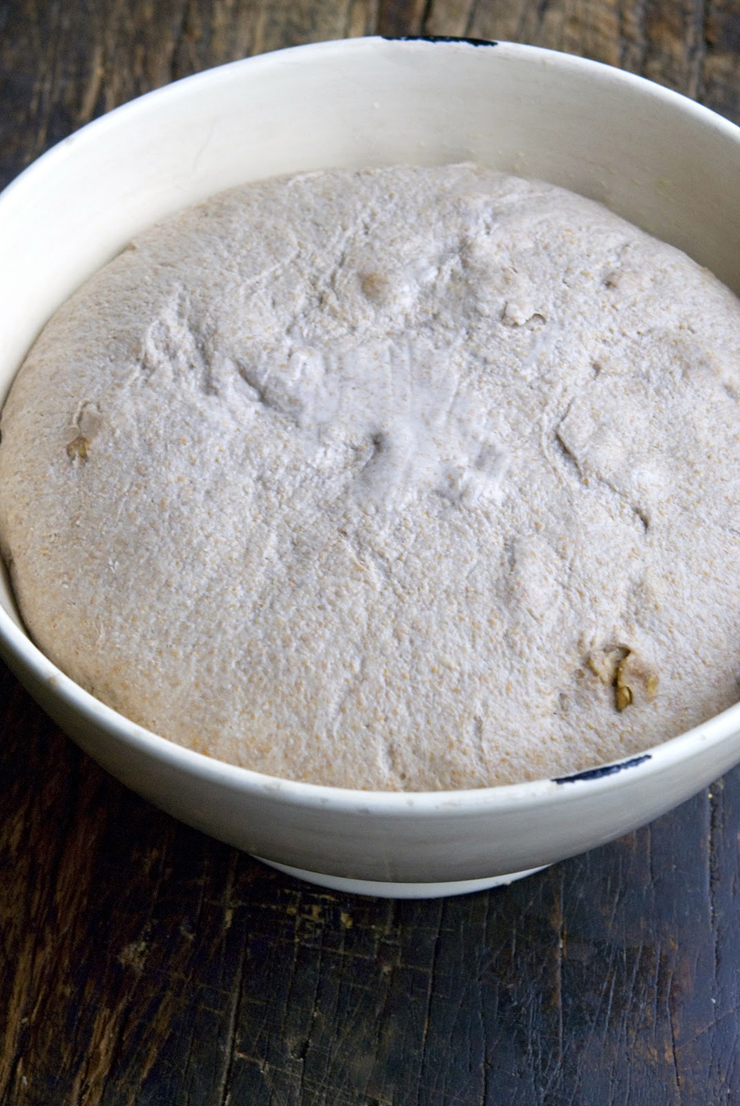
Gently transfer the dough onto a clean work surface (the dough will deflate, that’s ok). Shape the dough into a boule by applying downward pressure and rotating for about 30 to 60 seconds. Lightly flour a proofing basket with all-purpose flour and a little rice flour to prevent sticking. Shake off any excess flour. Place the boule upside down (seam-side up) in the floured proofing basket. Sprinkle lightly with flour and cover with a clean towel. Let sit at room temperature for 4-5 hours.
After the dough has risen, about 4 hours, preheat the oven. Place the cloche (if using) in the oven and preheat to 475-485 degrees. Let the oven preheat for 30-35 minutes. Gently invert the boule so the seam is now facing down, and place the boule in the cloche. Using a lame or sharp knife, score the top of the boule. Bake for 30 minutes with the cloche lid on. Remove the lid and bake for another 15 minutes at 450 degrees. Remove from the oven (the bread is completely cooked when the internal temperature reaches at least 200 degrees). Cool on a wire rack.
Enjoy!
Note: This was my first time baking bread in a cloche. A cloche is a natural clay stoneware baking dish, with a domed lid, that acts to simulate a hearth oven. The moist dough within the cloche creates the steam needed to produce a delicious moist bread with a crackly, golden crust.
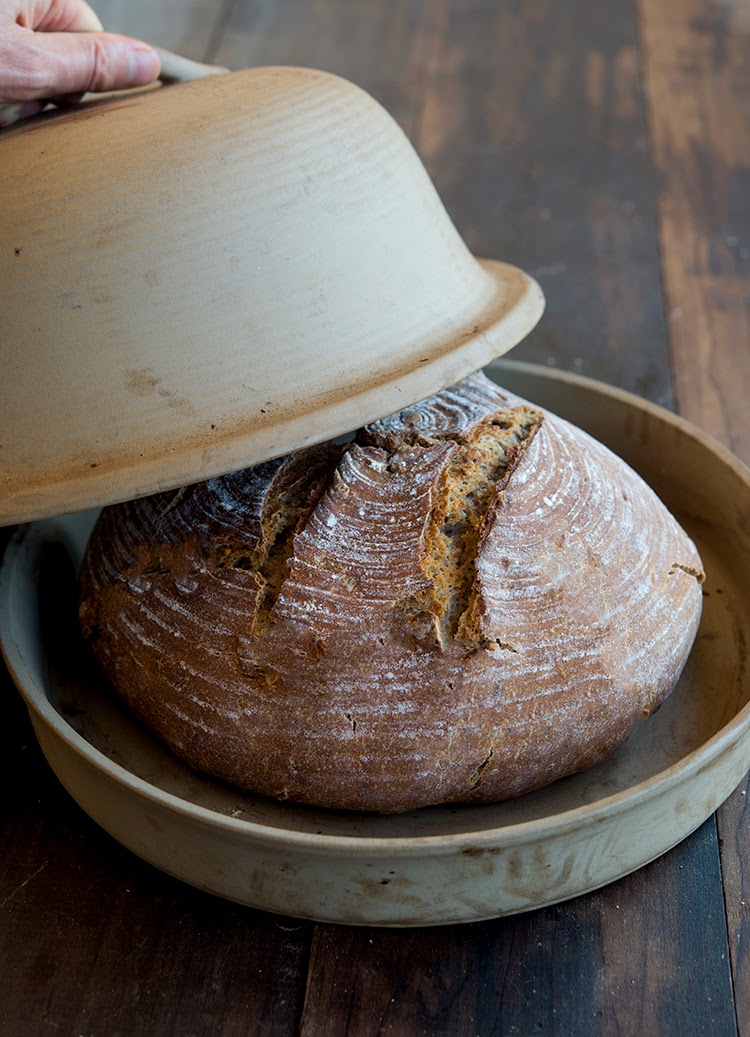
The butter in the below photo is from Clear Spring Creamery. Their cows are grazed using an intensive rotational grazing system. Every acre of the farm is planted with perennial grasses, ensuring environmental stability and resulting in naturally vibrant [orangey-yellow] fantastic tasting butter that pairs perfectly with this homemade bread.
12 Stages of Bread Baking (according to Peter Reinhart)
2. Mixing or kneading. Helps with gluten development, activates the yeast (initiates fermentation), and distributes all the ingredients. Pre-fermented dough helps to create superior bread by extending fermentation time and allowing more flavor development. There are two types of wet pre-ferments (poolish and levain) and two types of dry pre-ferments (pate fermentee and biga). Soaker is another type of preferment.
3. Primary Fermentation. The single most important stage in the creation of great bread. Yeast comes alive by eating sugar and creating carbon dioxide and alcohol.
4. Punching down (degassing). Expels carbon dioxide trapped in the gluten networks (too much carbon dioxide will choke the yeast), allows gluten to relax a bit, helps equalize the interior and exterior temperature, redistributes the nutrients and triggers a new feeding cycle.
5, 6, 7. Dividing, Rounding, and Benching (or resting the dough).
8. Shaping. Forming the dough into boules, batards, baguettes…
9. Proofing (secondary fermentation). Proving the yeast has enlivened the dough.
10. Baking. 3 transitions occur in the oven: 1) sugars in the crust caramelize, 2) proteins (gluten) coagulates when it reaches ~160 degrees creating structure; molecules line-up creating the crumb of the bread, and 3) gelatinization of the starches begins at ~ 180 degrees; molecules absorb moisture, swells, and bursts.
11. Cooling. Proteins set up and strengthen.
12. Eating. Finally!
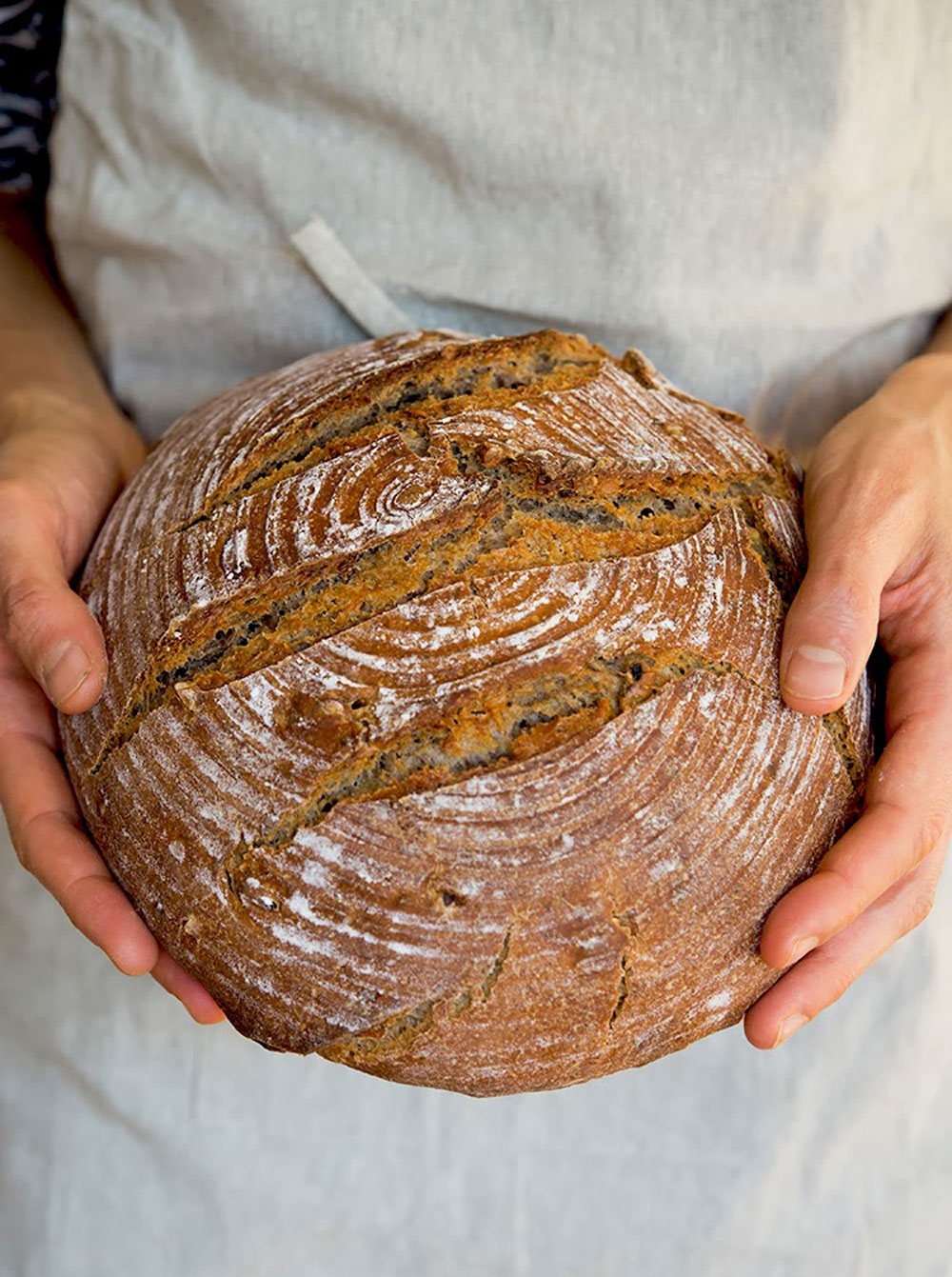







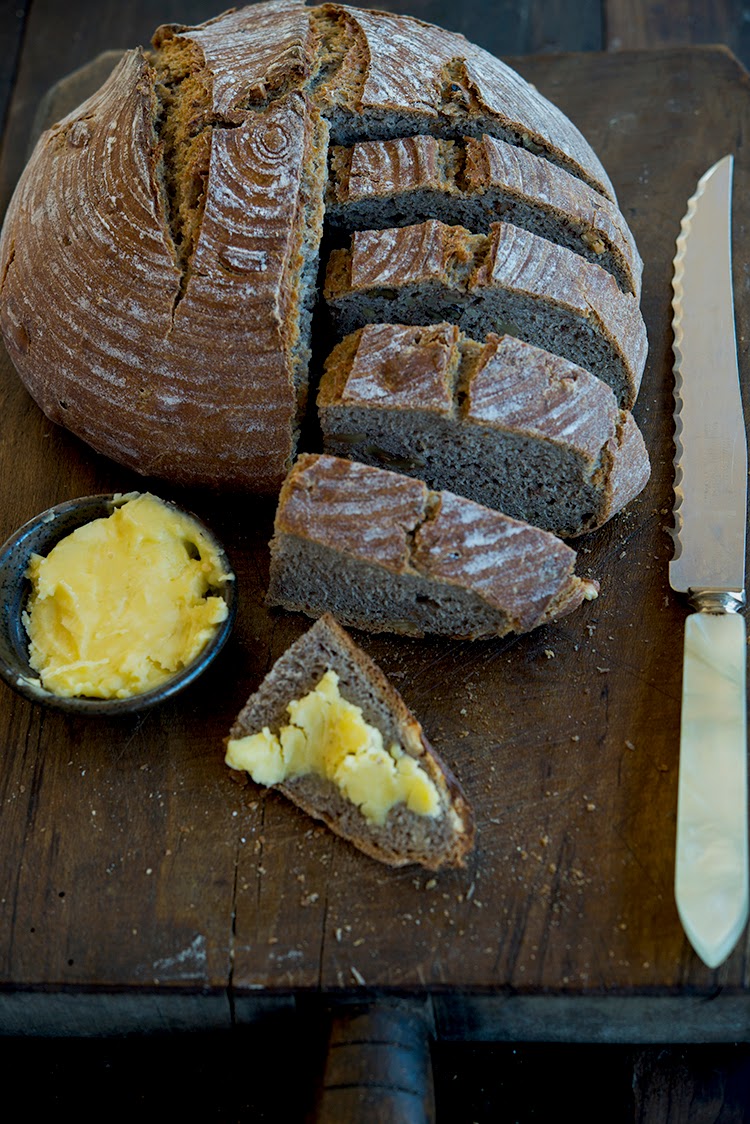


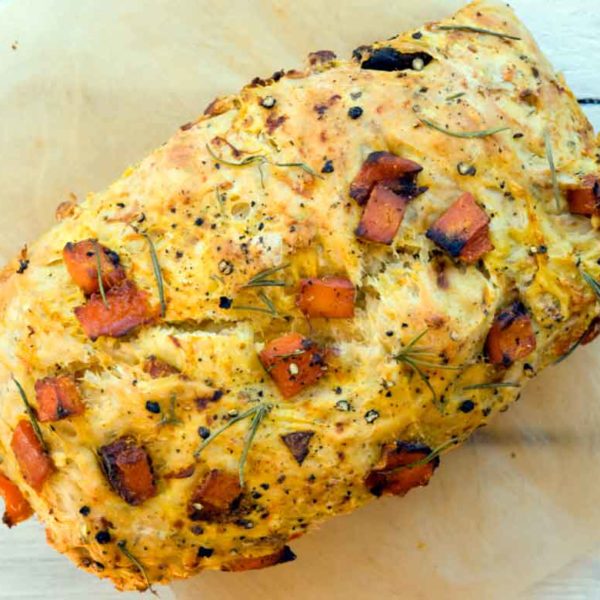
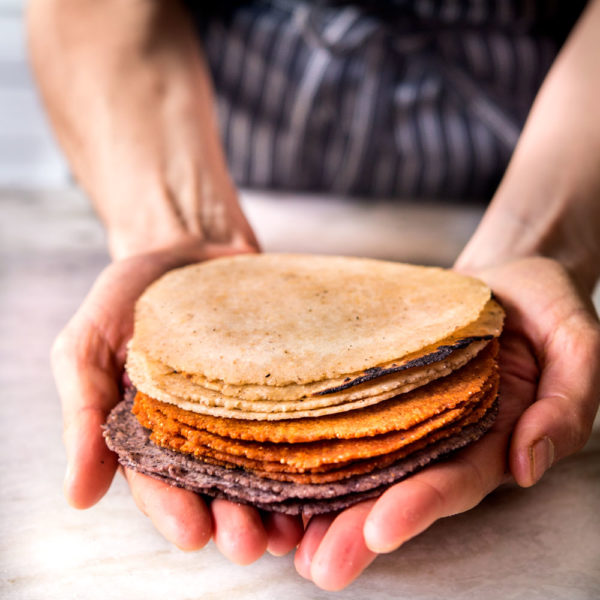
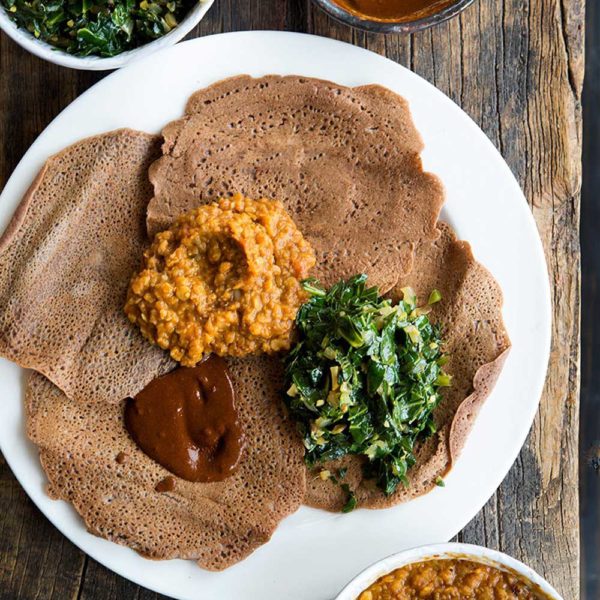


7 comments
Amy (Savory Moments)
This loaf looks beautiful! I tried making my own sourdough starter recently. It was going well, but then it died… I want to try again, but maybe I should just buy it from the place you used!
R
The recipe looks great–and I will start it tomorrow. I would like to verify that this makes only one boule? Less than 4 3/4 C flour usually makes two 8" boule's. Any quick help would be appreciated! Thanks.
R
The recipe looks great–and I will start it tomorrow. I would like to verify that this makes only one boule? Less than 4 3/4 C flour usually makes two 8" boule's. Any quick help would be appreciated! Thanks.
Wild Greens and Sardines
I made one large boule; but you could make two smaller. This was the original recipe that I used: http://www.breadtopia.com/whole-grain-sourdough/
Hope yours turns out well.
Wild Greens and Sardines
I made one large boule; but you could make two smaller. This was the original recipe that I used: http://www.breadtopia.com/whole-grain-sourdough/
Hope yours turns out well.
Michelle
This looks great I definitely want to try it! Do you think I can use a dutch oven instead of a clay bowl? I don’t want to have to buy a new baking dish to make this.
Thank You very much!
wildgreensandsardines@gmail.com
Hi Michelle, yes, you can use a Dutch oven. Happy Baking!